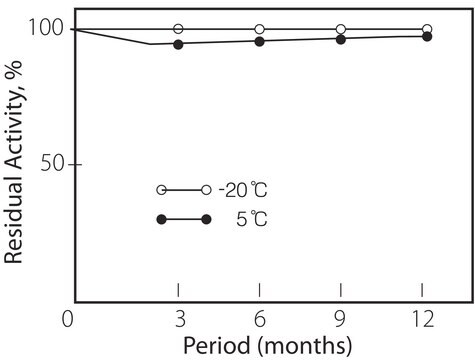I4504
Invertase from baker′s yeast (S. cerevisiae)
Grade VII, ≥300 units/mg solid
Sinónimos:
β-D-Fructofuranosidase, β-D-Fructofuranoside fructohydrolase, Saccharase
About This Item
Productos recomendados
biological source
bakers yeast
type
Grade VII
form
solid
specific activity
≥300 units/mg solid
foreign activity
α-galactosidase (melibiase) ≤0.01%
storage temp.
−20°C
¿Está buscando productos similares? Visita Guía de comparación de productos
Application
Biochem/physiol Actions
Unit Definition
signalword
Danger
hcodes
pcodes
Hazard Classifications
Resp. Sens. 1
Storage Class
10 - Combustible liquids
wgk_germany
WGK 3
ppe
Eyeshields, Gloves, type N95 (US)
Elija entre una de las versiones más recientes:
Certificados de análisis (COA)
¿No ve la versión correcta?
Si necesita una versión concreta, puede buscar un certificado específico por el número de lote.
¿Ya tiene este producto?
Encuentre la documentación para los productos que ha comprado recientemente en la Biblioteca de documentos.
Los clientes también vieron
Nuestro equipo de científicos tiene experiencia en todas las áreas de investigación: Ciencias de la vida, Ciencia de los materiales, Síntesis química, Cromatografía, Analítica y muchas otras.
Póngase en contacto con el Servicio técnico











